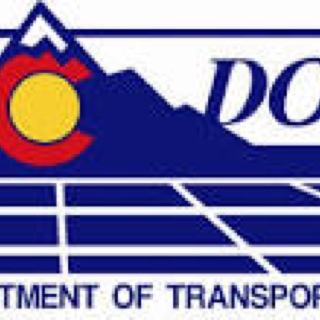Title Page
-
Project:
-
Contract #:
-
Location/ What3Words:
-
Project Manager:
-
Inspected by:
-
Current Site Activity:
-
Proposed # TBG operatives for site:
-
Proposed # Contractor operatives on site:
Human Factors & Human Elements
Competence
-
Have measures been put in place for accurately assessing the competency of everyone who will come on to the site – contractor vetting procedure completed – training records on file.
In particular, attention to competence should be applied to: -
Carrying out risk assessments and extracting the significant findings
-
Writing method statements and disseminating the content
-
Raising, monitoring compliance with and cancelling permits to work
-
Carrying out any type of training
-
Designing, erecting, altering or dismantling scaffolds (including alloy tower scaffolds)
-
Carrying out scaffold inspections – records on file
-
Raising scaffold hand-over certificates and removal certificates
-
Planning, supervising and working at height, using any means of access
-
Designing and installing excavation support systems
-
Carrying out the inspection of excavations
-
The identification and isolation (as necessary) of buried services
-
Operating all types of construction plant
-
Carrying out inspections and examinations of construction plant
-
Planning and supervising lifting operations
-
Inspecting and examining lifting equipment and accessories
-
Planning, supervising and carrying out work in confined spaces – permit to work
-
Carrying out rescues from confined spaces – trained operatives in confined space
-
The use of any power tool or hand tool that has the potential to be harmful if not properly maintained, inspected and/or used – register and safety checks
-
Assessing exposure to noise and/or vibration
-
The use of any flammable or hazardous substance
-
Any work on the public highway
-
Designing temporary works for site establishment
-
The space below are to enable competences not included above to be added
Consultation & Communication
-
Have measures been put in place to ensure effective two-way consultation and communication on matters of health and safety?
-
Regular H&S meetings with the contractors – minutes recorded and distributed to contracting companies
Co-operation
-
Have measures been put in place to ensure effective co-operation between everyone who will be on site?
-
Regular H&S meetings with the contractors – minutes recorded and distributed to contracting companies
-
Has contact been made with the relevant emergency services to ensure that they have sufficient information to deal with any foreseeable emergency that might arise?
-
Is there a plan where power and gas can be isolated for the building and nearest water supply
-
Out of hours should also be considered – Emergency Contact information posted on the building
Site Features & Facilities
Existing Buildings, Features & Ground Conditions
-
Have checks been made of the previous use of existing structures and the land?
-
Have checks been carried out for land that may be contaminated, for example, by leakage of fuels or oils?
-
Have the appropriate authorities been asked for details of water levels and/or underground water sources?
-
Is there evidence of previous storage in buildings, cellars or tanks of dangerous goods or hazardous substances?
-
Has all information, relating to any underground services, been provided?
-
Have the appropriate measures been taken to prevent an electrical hazard from overhead cables?
-
Has the existing electrical distribution system been made safe?
-
With regard to buildings on the site, is the strength/condition of roofs, floors, stairs, guard-rails, walls and structural members known?
-
Is there evidence of previous storage in buildings, cellars or tanks of dangerous goods or hazardous substances?
-
Have checks been made to establish whether or not asbestos is present?
-
Have checks been made to establish the presence of other hazardous agents, such as chemicals, gases, viruses or organisms?
-
Will any demolition required be carried out by competent contractors?
-
Has the delivery and installation of site-lighting been arranged?
-
Has the Health and Safety File for any existing structure(s) been consulted?
Site Security
-
Has the delivery and erection of materials to form a secure site boundary been arranged?
-
Have those people who will be on site as it is set up been informed of the security arrangements?
-
Have out-of-hours contact details been displayed at the site entrance?
-
Have separate security measures been put in place to prevent theft and to prevent access into identified hazardous areas?
-
Is a plan in place that outlines the actions that should be taken to deal with unauthorised visitors?
Management of vehicular and Pedestrian Traffic
-
Have traffic routes been designed to segregate vehicles from pedestrians?
-
Have site entrances and exits been positioned so as not to cause a traffic hazard on the public road?
-
Has the local Highways Department been contacted to discuss any temporary traffic management such as speed limits or diversions?
-
Have traffic management measures such as one-way systems, speed limits and turning areas been implemented?
-
Are there clear priorities, for example using traffic lights, where site transport and private vehicles use the same routes?
-
Has a safe area been designated for delivery vehicles waiting to unload?
-
Has a car-park for private vehicles, with a safe entrance and exits (separate exit for pedestrians), been established?
-
Have measures been taken to prevent mud and debris from accumulating on public roads?
-
Has a secure construction plant compound been established?
-
Have haulage roads been designed to prevent blind spots and prevent build up at pedestrian crossings?
Materials Storage & Lay-down Areas
-
Have these areas been planned so that traffic and pedestrian routes will not be obstructed?
-
Have these areas been positioned to avoiding the 'double handling' of heavy items that may have to be moved by hand?
-
Have proper storage areas been created for flammable substances, such as bottled gases?
-
Are palletised materials stored safely, with stacks of materials stable and limited in height?
-
Are storage areas located away from site boundaries, particularly in areas where the general public have access to the other side?
Utility Services
-
Have arrangements been made for the installation and commissioning of a suitable electrical supply?
-
Is a supply of fresh drinking water available?
-
Have arrangements been made for the installation and commissioning of drainage systems for surface and foul water?
-
Have arrangements been made for the supply of other types of heating fuel?
-
Have arrangements been made for the installation of the required internet access or other forms of telecommunication links?
-
Have appropriate measures been taken for the supply of stand-by power?
-
Have arrangements been made for the design and installation of a 110 volt distribution system?
Working At Height
-
Have arrangements been made for scaffolds to be erected, altered and dismantled by a competent person?
-
Have arrangements been made for the statutory weekly inspection of scaffolds to be carried out by a competent person?
-
Will all work at height be planned, supervised and carried out by competent person?
-
In all cases, will work at height be carried out using the most appropriate means of access to height?
-
Have arrangements been made to ensure that competent operators will be available for mobile elevating work platforms (MEWPS)?
-
Has consideration been given to whether the ground conditions are suitable for the use of MEWPs?
-
Will a survey be carried out to investigate the existence of cellars, drains and other underground voids?
-
Has consideration been given to the possible existence of overhead power lines or other high-level hazards?
-
Will the use of ladders be restricted to tasks where it is not reasonably practicable to use an alternative, safer means of access?
-
Has suitable equipment been obtained to form an adequate barrier (for example guard- rails) around each excavation into which a fall could cause a person to be injured?
-
Where installed, will the system of supporting the sides of all excavations be designed and installed by a competent person?
-
Will a safe method of installing the supports, that does not involve anyone going into an unsupported trench, be employed?
-
Will a safe means of access/egress be provided (where necessary) for each excavation?
-
Where vehicles have to approach an excavation:
- Will they be under the control of a trained signaler
- Will anchored stop-blocks (or a similar device) be installed to prevent the vehicle over-running
-
Have arrangements been made for the statutory inspections of excavations to be carried out by a competent person?
-
If the sides of the excavation are sloped or battered, is the angle of batter sufficient to prevent collapse?
-
Has consideration been given to the possibility of any excavation affecting the stability of neighbouring structures?
-
Will materials spoil or plant be stored away from the edges of the excavation, to reduce the likelihood of collapse?
Site Office
-
Have arrangements been made for the delivery and siting of adequate office accommodation, including carrying out any enabling work?
-
Is the site office located so that it can be accessed without the need to wear PPE?
-
Does the site office have a safe form of heating, with the fuel stored in a safe manner?
-
Are the electrical circuits in the office protected by an RCD and regularly tested and inspected?
-
Is there a suitable, fully stocked first-aid kit in the office?
-
Have alternative provisions been made for first aid?
-
Is an accident book that conforms to the requirements of the Data Protection Act available?
-
Is a copy of the current version of the official Health and Safety Law poster displayed?
-
Has a copy of the official Health and Safety Law leaflet been handed to everyone on site?
-
Is a copy of the Company Health and Safety Policy displayed?
-
Have registers been set up for recording statutory inspections?<br> Records of Reports of Inspections<br> LOLER Inspection<br> PUWER Inspection<br> Plant & Equipment<br> PPE & RPE<br> Ladders & Stepladders<br> Fixed Scaffold, Mobile Aluminum Towers Podiums Inspection<br> PAT Testing<br> Site Visitors<br> Fire Safety Equipment (Manual Extinguishers, Alarms, Blankets, Hoses, Stands & Trolleys, etc.)<br> First Aid Box’s & Contents<br>
-
Have other registers, as may be necessary, been set up?
-
Is a copy of the F10 (rev) displayed?
-
Is a copy of the Certificate of Employers' Liability Insurance displayed?
-
Are emergency plans and routes to the nearest hospital displayed?
Welfare Facilities
-
Toilets which are adequately ventilated and lit?
-
Washing facilities (including showers if necessary), which are equipped with hot and cold (or warm) water, soap and towels or a means of drying?
-
Rest areas (including facilities for a female person who is pregnant, or a nursing mother, to lie down)?
-
Drying and/or changing rooms with secure lockers?
-
Where necessary, separate facilities for men and women?
-
The cleaning and keeping in good order of welfare facilities?
-
A supply of fresh drinking water complete with suitable cups, unless from a ’'water fountain' or similar?
-
A means of preparing hot food?
-
Arrangements to enable food to be eaten in reasonable comfort (including an adequate number of tables and chairs with backs)?
-
A means of boiling water
First Aid
-
Have sufficient and suitable first-aid kits been obtained?
-
Has an assessment been made as to whether more extensive first-aid facilities are required?
-
Have 'travelling first-aid' kits been obtained for site vehicles and anyone who works in a remote location?
-
Are sufficient qualified first aiders available?
-
Are sufficient 'appointed persons' available?
-
Has initial or refresher first-aid training been arranged as necessary?
-
Has a scheme whereby first aiders can be quickly located and identified been implemented?
-
Has an adequate number of first-aid signs been obtained and displayed?
-
Has an accident book, which complies with the Data Protection Act 1998, been obtained and made available?
Fire Safety
-
Have an adequate number of serviceable fire extinguishers of the appropriate type(s) been obtained?
-
Has an appropriate number of site-staff been trained in the selection and use of hand-held fire extinguishers?
-
Are fire extinguishers located at well-signed and easy to find fire-points?
-
Has an effective fire alarm system been devised?
-
Will everyone on site be made aware of what the fire alarm sounds like?
-
Has a means of preventing the accumulation of flammable waste material been established?
-
Have suitable and sufficient fire safety signs been obtained and displayed?
-
Have proper storage areas for flammable substances like LPG been established?
-
Will smoking be allowed in well-defined safe areas of the site and/or welfare facilities?
-
Have signs been erected to clearly define the boundaries of the areas in which smoking is allowed?
-
Has consultation been undertaken with the local Fire Officer?
-
Has a fire risk assessment of the construction site been completed– living document to be revised as the building alters?
-
Has a suitable and sufficient fire plan been produced and displayed?
Emergency Procedures
-
Has an emergency evacuation plan been drawn up and communicated to all on site?
-
Will a nominated person monitor the evacuation plan and ensure that it is always up to date?
-
Has an adequate number of 'evacuation wardens' been appointed and informed of their duties?
-
Have one or more assembly points, which are a safe distance from the potential hazard, been selected?
-
Have 'assembly point' signs been obtained and clearly displayed?
-
Has everyone on site been informed of:<br><br>The location of the assembly point to which they are to report to<br><br>• What to do in the event of an evacuation?<br>• What the evacuation signal sounds like?<br>• What to do when they get to the assembly point?<br>• The days / times when the evacuation signal will be tested?<br>
Personal Protective Equipment
-
Has an assessment of the needs for personal protective equipment (PPE) been made, engaging the assistance and advice of a reputable supplier if necessary?
-
Has everyone on site been issued with all of the PPE that they need to carry out the jobs allotted to them?
-
Does everyone on site know how and where to obtain any extra PPE that they might need in the future?
-
Does everyone on site know how to obtain replacement PPE for that which is lost or defective?
-
Has a PPE issue log been started?
Signs & Notices
-
Has a 'combination' safety sign been erected at each site entrance to inform everyone who needs access of the minimum standards of safety on site?
-
Has an adequate selection of warning, prohibition, mandatory and safe condition signs been obtained and displayed?
-
Has an adequate stock of other signs, such as traffic management signs, been obtained and displayed?
-
Has a person been nominated to ensure that additional signs are erected and existing signs are moved or removed to reflect changing conditions as the job progresses?
Waste Disposal
-
Have arrangements been made for the delivery of sufficient skips or other suitable containers to enable different types of waste materials to be stored?
-
Has the site been registered with the Environment Agency as a producer of Hazardous Waste (England and Wales only)?
-
Have arrangements been made for the collection and transportation of non- hazardous and hazardous waste by a licensed waste disposal contractor to take the waste to a licensed disposal facility?
-
Have the arrangements for the segregation and disposal of waste been communicated to everyone on site?
-
Has an area of the site that is readily accessible by large vehicles been set aside for the siting of skips?
Environmental Aspects & Impacts
-
Have arrangements been made for the delivery of sufficient skips or other suitable containers to enable different types of waste materials to be stored?
-
Has the site been registered with the Environment Agency as a producer of Hazardous Waste (England and Wales only)?
-
Have arrangements been made for the collection and transportation of non- hazardous and hazardous waste by a licensed waste disposal contractor to take the waste to a licensed disposal facility?
-
Have the arrangements for the segregation and disposal of waste been communicated to everyone on site?
-
Has an area of the site that is readily accessible by large vehicles been set aside for the siting of skips?
-
Section 60: can specify the plant to be used, the hours during which the works should be carried out and the level of noise which may be emitted. Section 61: Consent to undertaken noisy works in defense of section 60.
-
Are Sections 60 and 61 notices in place to impose limits on the timing and level of noise generated by site activities?
-
Have measures been put in place to avoid or reduce the more obvious environmental problems, such as: <br>Spillage of environmentally damaging fluids?<br>• Any spillage that does occur is not able to seep into the ground,<br>• Drainage systems or watercourses?<br>• The management, storage and disposal of waste materials?<br>• Noise and dust pollution, arising out of construction activities?<br>• The number and quantity of substances used that give off<br>
-
Has the existence of protected species of mammals, insects, plants etc. been investigated?
-
If protected species are known to be on site, have appropriate measures been taken to ensure that they remain undisturbed or undamaged?
-
Have arrangements been defined to adequately deal with environmental emergencies such as the accidental release of oil and fuels?












